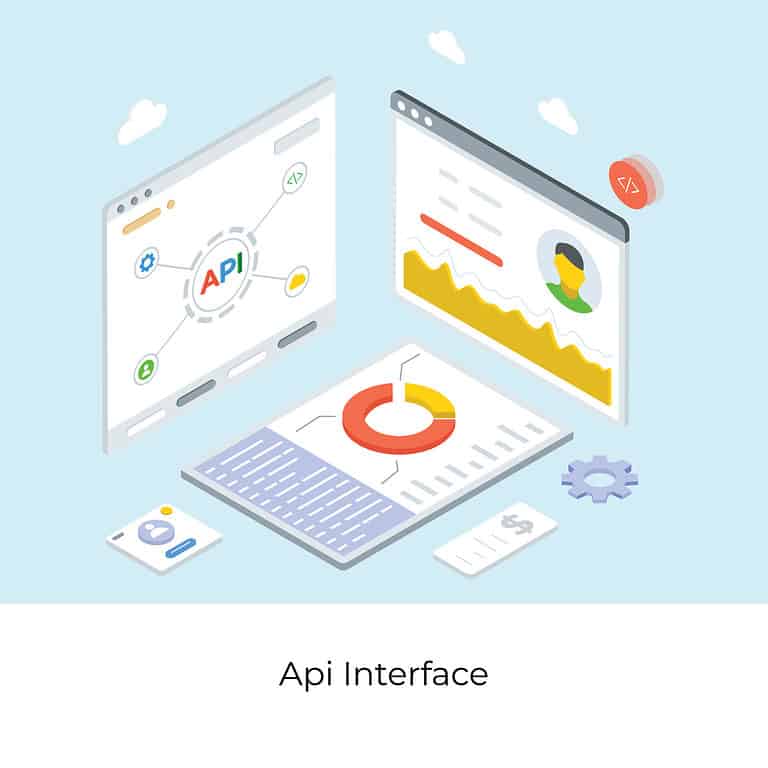Efficient Data Center Migration: Your Ultimate Checklist for a Smooth Transition
Initiating data center migration but unsure how to proceed? Get clarity here. Boost performance and reduce costs by following our focused guide. Avoid the pitfalls and learn the key steps for a successful migration—from planning to post-move validation—without the fluff.
Key Takeaways
Data center migration is a complex process designed to enhance performance and efficiency by transferring digital assets, with steps including lift-and-shift migration, meticulous testing and documentation, and ensuring high availability configurations for resilience.
A successful data center migration requires a detailed roadmap, which involves assessing current infrastructure, setting realistic migration goals, and developing a comprehensive migration strategy that incorporates risk management to mitigate potential challenges.
The migration concludes with the careful selection of new data center locations for optimized service, ensuring robust data backup and protection measures, managing hardware logistics, performing post-migration validation, and decommissioning the old data center with secure data erasure and responsible disposal of hardware.
Understanding Data Center Migration

Data center migration is the process of transferring digital assets, databases, IT resources and applications from one data center to another with the aim of optimizing efficiency and boosting performance. It also goes by its other term, cloud migration. To ensure a successful outcome for this kind of shift in operations, there are 3 necessary steps that need attention when it comes to both regular as well as cloud-to-cloud migrations: lift and shift. Documentation & testing then lastly examination concerning moving services over to a fresh Cloud platform should all be taken into consideration. The first step involves relocating an application or system ‘as is’ so it can easily adapt itself within new circumstances – normally done temporarily just to reduce infrastructure costs involved. And Assessing plus recording any details must happen accurately before going on towards implementation ultimately onto your destination’s chosen Cloud setting which has been identified through analysis prior along with carrying out tests where applicable.
The Core Objectives of Data Center Migration
Organizations may seek to undergo data center migration for several reasons. First, it can provide an improved level of scalability and agility in adapting to changing demands due to corporate growth. Second is the potential cost savings from utilizing a more efficient cloud infrastructure that provides greater long-term value compared with other options available. Finally, migrating data centers also enhances security through features like High Availability (HA) configurations. These strengthen business continuity by protecting against potentially devastating system failures during migrations processes.
Planning Your Data Center Migration Journey

Prior to commencing a data center migration, it is essential that an exhaustive roadmap be laid out. During this planning process, we will explore key elements such as analyzing the current infrastructure, forming achievable goals for the migration and constructing a comprehensive plan with related risk management practices tailored specifically towards achieving successful completion of our data center move.
Assessing Your Current Infrastructure
In any data center migration, it is essential to understand the existing infrastructure. It includes surveying hardware and equipment that must be moved, as well as determining potential pitfalls in your current setup which can then be corrected during relocation for maximum success with minimal risks. Physical audits help identify areas needing attention so you have a smoother transition process. All of these measures are imperative to ensure an effective movement of the data center towards its new destination without complications or disturbances along the way.
Setting Realistic Migration Goals
After completing an assessment of the existing infrastructure, it’s time to outline realistic goals for the migration procedure. This Includes: gathering a full inventory of assets, formulating a plan for migrating systems, and executing said scheme with proficient precision and efficiency. As well as achieving enhanced data center density while taking up less physical space.
Risk Management Strategies
Data center migration is an undertaking that entails potential risks and must be managed appropriately. All relevant measures, such as preventive actions, a communication strategy and regular reviews of the risk management plan should be put in place to lessen their impact on business operations.
Crafting a Detailed Data Center Migration Checklist

Once a well-structured plan has been established, the next step is to generate an exhaustive checklist in order to navigate us through migration. This guide will provide direction as we compile inventory notes and determine what data center location best suits our needs while putting data backup and protection into action.
Inventory and Documentation
In any data center migration process, it is essential to ensure precise inventory and documentation. This should include information about network connectivity, applications, hardware components used in the facility, as well as cabling setup and categorization of items that need moving or discontinuing during the migration procedure.
Selecting the Right Data Center Location
When deciding on the ideal data center location, there are several important factors to consider: quality of service, success rate, energy efficiency and carbon footprint minimization for environmental sustainability. As well as performance capacity, security levels and cost-efficiency. All these elements will determine whether your digital assets find a successful new home or not.
Data Backup and Protection Measures
Protecting data is essential for a successful migration. To do this, it is important to create a robust and comprehensive plan with detailed asset inventory which includes the process of moving hardware, software, applications and cost into consideration. Taking these measures provides assurance that all aspects related to data backup are in place throughout the entire migration process.
Executing the Data Center Migration

This guide will help you complete the migration process, providing direction for precise data movement, managing hardware logistics and verifying its success. Planning has been meticulous. Now it’s time to carry out all that was intended!
Moving Data with Precision
When attempting to carry out a successful data center migration, the transfer of information with accuracy is essential. This requires doing an inventory analysis of all existing materials and coming up with a coherent plan for movement as well as scheduling it properly.
Prior to handing off hard drives to other entities, we must make sure that they are completely wiped clean first. Moving data carefully and purposefully is fundamental in achieving success when executing this type of center migration venture!
Data Center Hardware Logistics
It is essential to recognize any physical barriers and consider cloud services or alternative offsite opportunities when choosing a suitable migration plan. To carefully manage the material transition of hardware components, which are as important as transferring data.
Post-Migration Validation
The migration process isn’t finished once the data is successfully moved. It’s key to examine the new environment in detail, validate its security settings, make sure all values and formats are accurate as well as test their compatibility with established schema – plus run load/stress tests for assessing how effective it operates.
Navigating Common Data Center Migration Challenges
When undertaking data center migration, various hurdles may arise such as dealing with older applications, minimizing downtime and guarding against safety threats. In this section we will offer guidance on how to effectively tackle these issues in order to ensure a successful journey.
Legacy Applications and Compatibility
The difficulty of a data center migration is complicated by legacy applications which are not very adjustable. To handle such apps, the process involves modernizing their obsolete programs with APIs, guaranteeing that the new system can uphold both security and information reliability in an incremental migration strategy.
Managing Downtime and Service Interruptions
Organizations should be mindful of how downtime and service interruptions can negatively influence business operations and customer satisfaction, so gathering data on the source/target along with scoping out requirements in advance is critical for selecting an effective migration approach.
Addressing Security Risks and Compliance Issues
When relocating a data center, security risks and compliance are essential priorities. Safeguarding data must be the highest priority to avoid any unauthorized access and proper disposal of electronic waste is necessary too.
Leveraging Data Center Migration Tools

Various specialized tools and solutions are useful for simplifying the migration process. This section will cover a range of support mechanisms, such as aiding with discovery and mapping tasks, automation technology, plus observation capabilities.
Discovery and Mapping Tools
Tools such as Manta and Altova MapForce are key to a successful transition of applications to the cloud, since they provide users with powerful data conversion and integration capabilities. This type of mapping technology is essential in order for organizations to formulate strategic plans related to technical aspects when transitioning their apps into the cloud environment.
Automation Solutions for Efficient Migration
Automation solutions can substantially improve the accuracy, dependability and swiftness of data center migration. Several notable automation platforms for this process are Nanonets, Integrate.io, AWS Data Migration, Informix (IBM), Azure DocumentDB as well as DBConvert Studio.
Monitoring and Management Processes
Continuous surveillance of the data center during its migration is an essential requirement for successful management of performance. To assist with this, tools such as Site24x7, SolarWinds Server & Application Monitor (SAM), SolarWinds Storage Resource Monitor (SRM) and Uila can be employed to monitor the activity at your data centers after relocation.
Enhancing Performance with Cloud Platforms
Integrating cloud-based solutions into the migration process is an effective way of improving data center performance. Developing a sound strategy for moving to the cloud, be it public, private or hybrid, are essential in order for this transition to go smoothly. Cloud platforms offer significant advantages when it comes to making sure that all aspects regarding your changeover are taken care of efficiently and successfully. Thus putting together a successful cloud migration plan should definitely involve considering all available strategies carefully before commencing with any actions.
Public Cloud, Private Cloud, and Hybrid Cloud Options
Choosing the right cloud deployment model is essential for an organization’s success. Depending on what particular requirements a company has, opting for one of three options—public, private or hybrid clouds—may prove to be the most advantageous. Each option offers different benefits and should therefore be considered carefully before making a decision.
Cloud Native Features and Their Impact
Cloud native features can be an important factor in increasing data center performance. By taking advantage of a cloud service, these capabilities are easy to incorporate into the existing infrastructure and enable improved customer experience by providing scalability when faced with sudden traffic increases while also being cost-effective as well as more adaptable and agile.
The Final Phase: Decommissioning the Old Data Center
As we come to the end of our mission, steps are being taken for shutting down the existing data center. All information must be deleted securely from decommissioned items and hardware should be disposed of in an environmentally conscious way.
Secure Data Erasure and Hardware Disposal
It is essential to securely erase sensitive data on decommissioned equipment by using techniques such as overwriting and cryptographic erasure, before discarding any electronic waste properly.
Repurposing or Selling Used Equipment
Rather than discarding them, decommissioned data center components can be put to use in other ways or sold. Doing so not only assists with recuperating the cost, but also helps reduce wastefulness.
Summary
As we come to a close, let’s wrap up our dialogue regarding data center migration. We will summarize the most significant ideas discussed and leave readers with some Insight for consideration.
Frequently Asked Questions
What is a data center migration?
Data center migration involves transferring technology and infrastructure from one data center to another through careful planning. It is an ideal way for a business to streamline its existing system, load applications onto other servers and save money in the process.
What are the 4 types of data migration?
When it comes to data migration, there are four primary types of transfer: storage migrations, application migrations, database migrations and business process moves. Storage migrations involve the shift from one system or platform to another while maintaining access rights for users. App transfers focus on moving applications between servers within an application.
What are the reasons for data center migration?
Data center migration is often done in order to reduce expenses, increase responsiveness and scalability, as well as enhancing security. It may involve transitioning to a hybrid or cloud-based infrastructure. Such migrations are usually motivated by consolidation demands, the necessity of transformation and modernizing systems for optimal performance.
What are the steps in data migration?
The critical elements in a data migration strategy are preparation, design, execution, testing and upkeep. This includes examining the information at hand, organizing the project with strategies such as backing up data and evaluating resources for use, and running the migrant plan efficiently. Exploring that system works correctly post-migration process is completed. Followed by upholding effective maintenance on said approach. Keywords of focus include: ‘data migration’ as well as ‘the proposed migratory scheme’.







